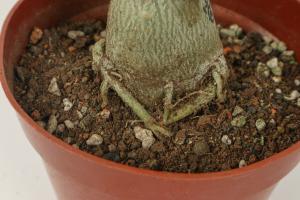Snake Plant Propagation: A Beginner's Guide
If you鈥檙e a houseplant enthusiast, you鈥檝e probably heard about propagating plants. Propagation means taking a part of a plant and using it to create a new one. In this article, we will discuss how to propagate snake plant, also known as Sansevieria.
What is a Snake Plant?
Sansevieria, or snake plant, is a popular houseplant due to its air-purifying properties and low maintenance requirements. It comes in various shapes and sizes, ranging from short rosettes to long and tall leaves. Snake plants are native to Africa, Madagascar, and southern Asia, and they grow best in warm and humid environments.
Methods of Snake Plant Propagation
There are two common ways to propagate snake plants: through division and through leaf cuttings.
Propagation through Division
Division is the easiest and most common method of propagating snake plants. To propagate a snake plant through division, follow these simple steps:
Remove the plant from its container and separate the root ball into two or more sections. Each section should have a few leaves and a small portion of the root system.
Plant each section in a new container with fresh potting soil.
Water the new plants sparingly and keep them in a bright, indirect sunlight location until they take root and start to grow new leaves.
Propagation through Leaf Cuttings
If you don't want to separate your parent plant into multiple plants, you can propagate your snake plant through leaf cuttings. This method is a bit more complicated, but it allows you to create more plants with less space. Here's how to do it:
Cut a few healthy leaves with a sharp, clean knife. Each cutting should be four to six inches long and have a portion of the stem attached.
Let the cuttings dry for a few days to callus over. This will prevent the cuttings from rotting when planted in soil.
Plant the cuttings in a small-sized container with well-draining soil. Plant the cuttings shallowly, leaving the upper two-thirds above the soil line.
Water the cuttings once a week and keep them in a warm environment with plenty of bright, indirect sunlight.
Roots and new leaves should start to appear within three to six weeks.
Caring for Your Newly Propagated Snake Plants
Once your new snake plants have taken root and started to grow, there are a few things you should keep in mind to ensure their continued health and growth. Here are some tips:
Water sparingly: Snake plants are drought-tolerant plants, so they don鈥檛 need much water. Overwatering can cause root rot.
Provide plenty of light: Snake plants grow best in bright but indirect sunlight. Keep them away from direct sunlight, which can scorch their leaves.
Fertilize occasionally: Snake plants benefit from occasional feeding with a balanced houseplant fertilizer. However, be careful not to over-fertilize as this can damage their roots.
Re-pot occasionally: Snake plants prefer to be slightly pot-bound, but they do need to be re-potted occasionally to replenish their nutrients and allow for growth.
Conclusion
Propagation is an excellent way to expand your plant collection without spending a lot of money. With these simple techniques for propagating snake plants, you鈥檒l soon have an endless supply of these beautiful and low-maintenance plants. So, can you propagate a snake plant? The answer is a definite YES!

 how many times do yo...
how many times do yo... how many planted tre...
how many planted tre... how many pine trees ...
how many pine trees ... how many pecan trees...
how many pecan trees... how many plants comp...
how many plants comp... how many plants can ...
how many plants can ... how many plants and ...
how many plants and ... how many pepper plan...
how many pepper plan...






























